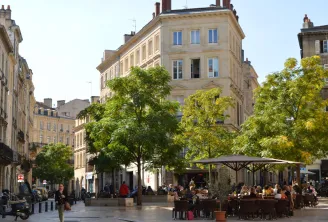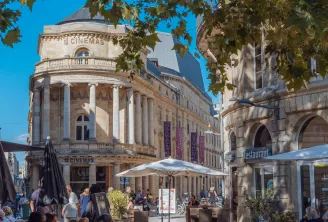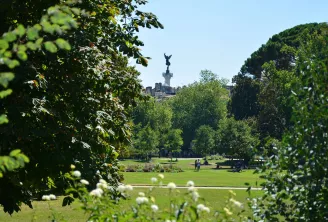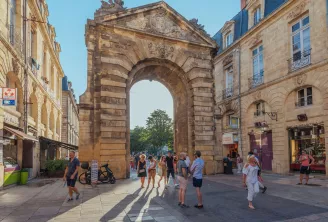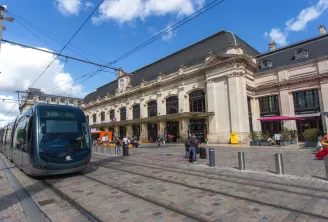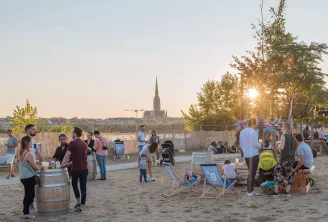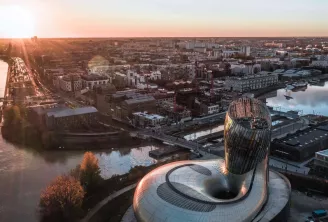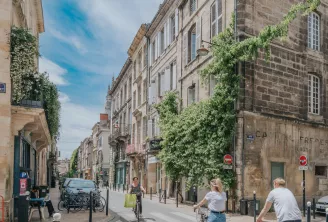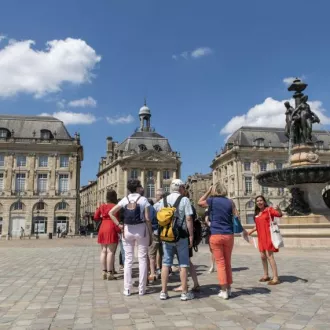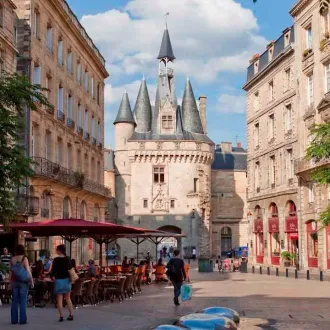Bordeaux is a city rich in history and heritage, and this is particularly evident in the Old Town district. Find out more about our guided tours.
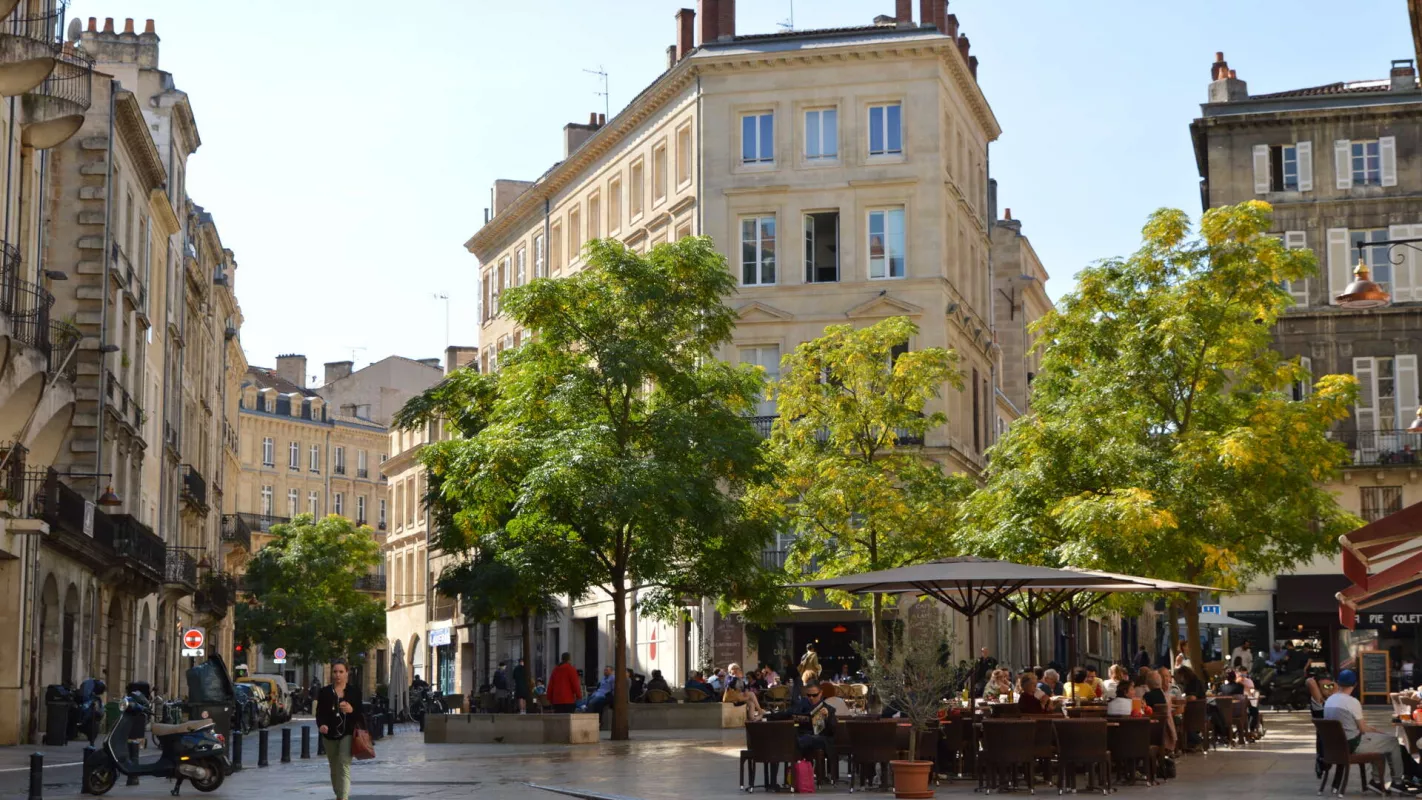
Old town and Saint-Pierre district
The neighbourhood between Cours de l’Intendance and rue Peyronnet is the heart of Vieux Bordeaux (Old Bordeaux). In fact, this consists of several distinct neighbourhoods corresponding to the parishes (or former parishes) of Saint-Pierre, Sainte-Colombe, Saint-Michel, and Sainte-Croix. The district's monuments, streets, and socio-economic profile make it truly different.
A UNIQUE ARCHITECTURAL ENSEMBLE
The radical innovation of royal intendants in the 18th century was to open up the district to the river and its port. By razing the medieval wall, they cleared the area around Place de la Bourse, rue Royale, and the future Place du Parlement. This transformation paved the way for the district's rich architecture.
Nicolas Beaujon, the first very wealthy merchant, was born in 1718 at no. 11 rue du Parlement-Sainte-Catherine. The merchant Castagnet's house at 16 rue Fernand-Philippart (formerly rue Royale) built in 1760 has a beautiful rounded balcony with magnificent curved ironwork. No. 9 rue des Faussets features a facade decorated with an ornate and beautifully-executed frieze depicting eagles. A niche cared into the stone at the corner of rue du Cancéra and rue des Bahutiers in 1687 has a statue of Saint Pierre. Flora Tristan, one of the first feminists and grandmother of Paul Gauguin died here. A few steps away, at no. 19, where there was once of public fountain, a bas-relief "The Samaritan Women at the Well", was carved by an anonymous sculptor. You cannot leave this district without visiting the wonderful Place du Parlement and admiring urban renewal programmes undertaken by mayors over the years, combining original constructions dating from 1760 and newer buildings in an identical style!
SAINT PIERRE, THE BIRTHPLACE OF BORDEAUX
After the Roman town of Burdigala ceased to exist, the inhabitants moved away from the river, and the new city centre became what is now the Saint-Pierre district. The entrance to the inland port was located here centuries ago. Ships full of goods dropped anchor before sailing to other provinces and countries, and a number of merchants grew rich.
The first church was built on the premises of the former port in the Middle Ages. The street names remind us of various professions that were grouped together: rue des Argentiers (goldsmiths), rue des Bahutiers (chest makers), rue du Chai des Farines (grain warehouses), rue Maucoudinat (where seamen's inns were located), and rue des Trois Chandeliers (candlemakers). In the 16th century, prosperous families came to settle here and a law court was established in the Cour des Aydes.
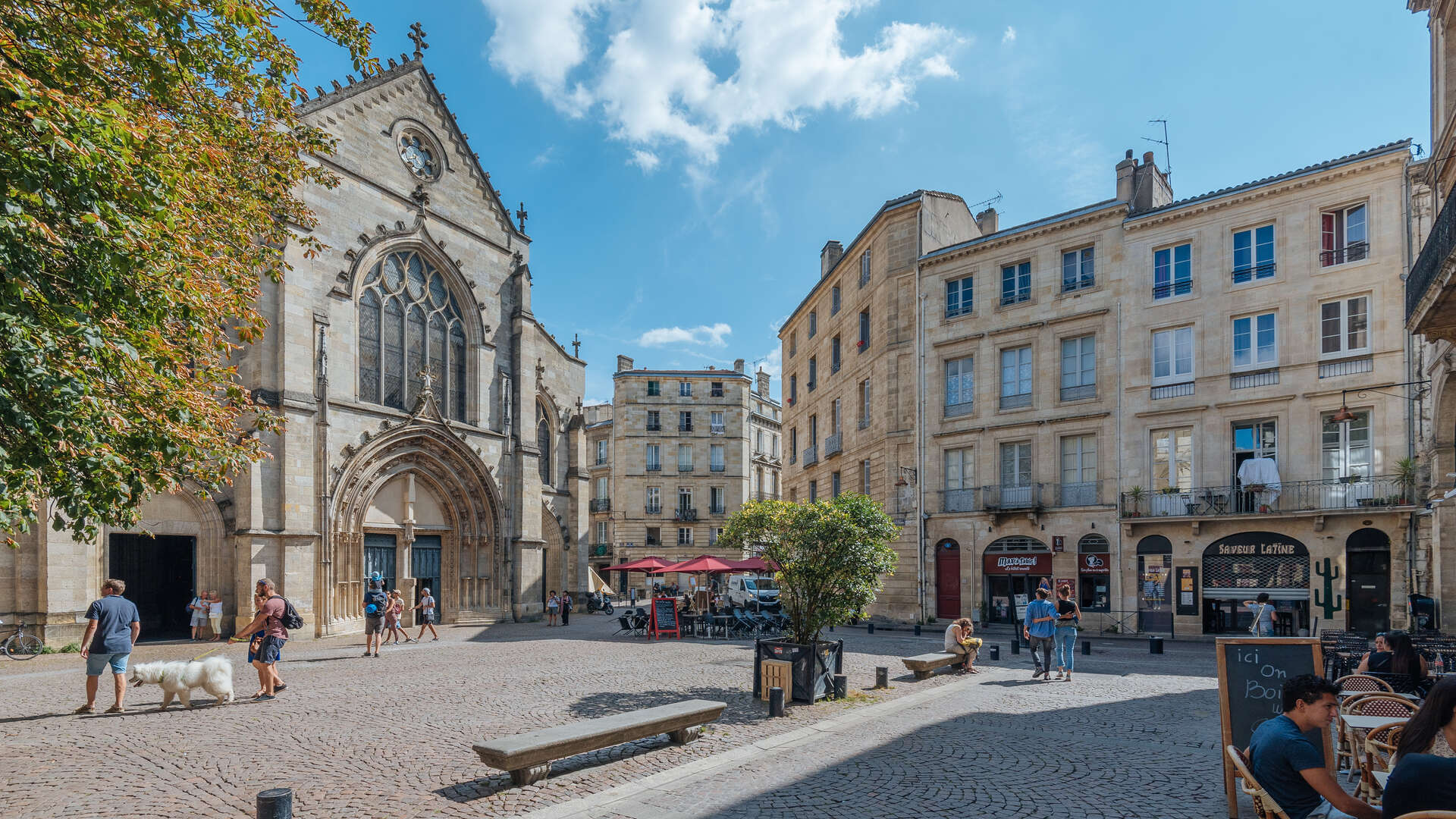
THE PORTE CAILHAU, A ROYAL ENTRANCE BETWEEN THE CITY AND THE RIVER
Despite its age (just imagine – it dates from 1494!) this large, beautiful monument remains practically unchanged. It was built to commemorate Charles VIII's victory at Fornovo (Italy). This French king has left his mark on the tower since his likeness decorates a niche on the river side and a notice ask visitors to pay attention to the lintel and reminds them that Charles VIII died from walking quickly into just such a lintel...
What does the word Cailhau mean? No one seems to know for sure! Historians have various theories, but it doesn't really matter!
The Port Cailhau, thirty-five metres tall, was integrated into the city walls. In 1864, it was rented by a public letter writer and a person whose job was to weigh salt. They were both evicted in order to renovate the monument.
There is a magnificent view of the oldest bridge in Bordeaux, the Pont de Pierre, from here.
An exhibition displays the tools and materials used for construction purposes at the time the Porte Cailhau was built and an audio-visual presentation pieced together from old films immerses us in the world of stone masonry.
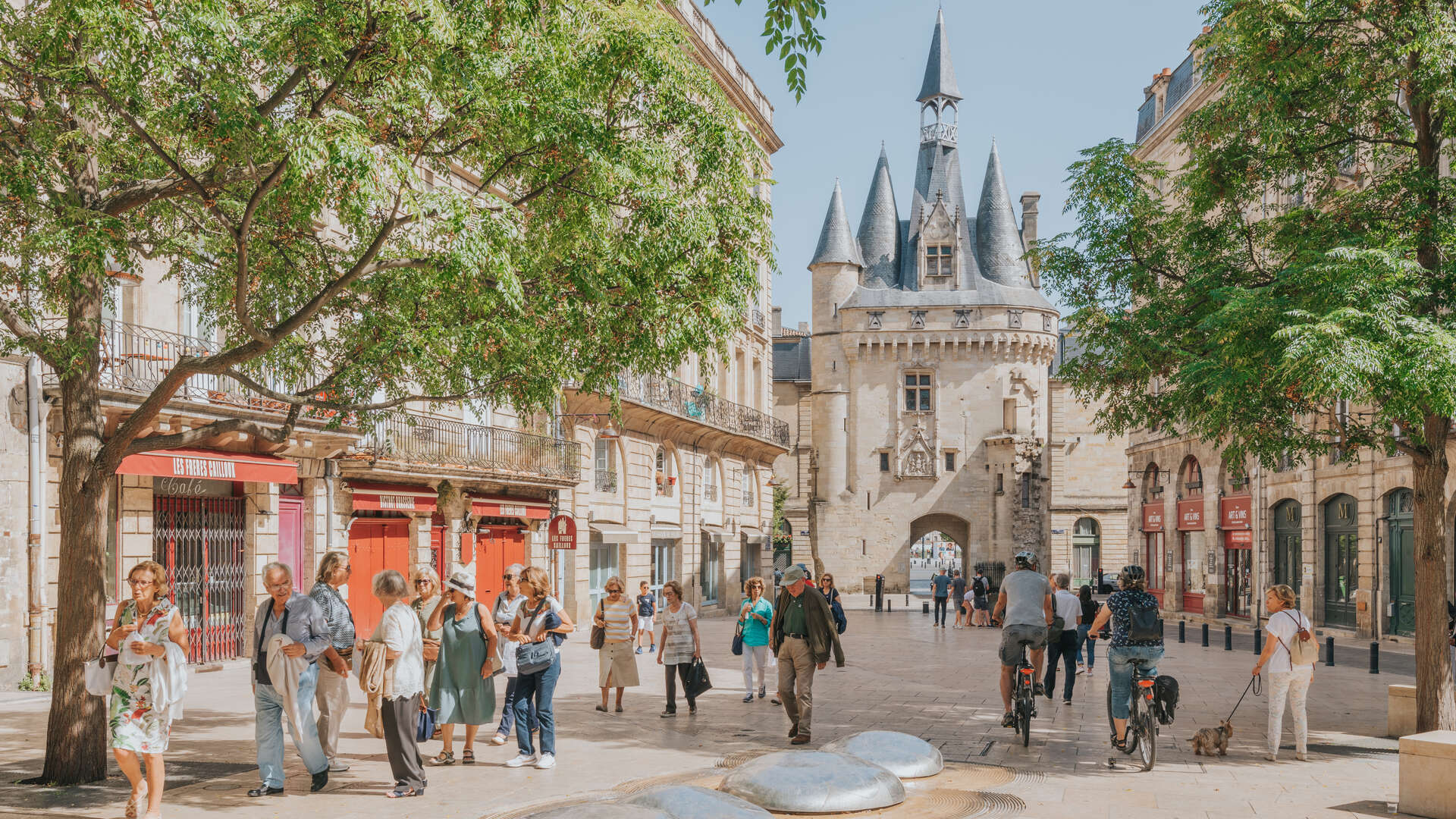
Discover the other districts of the city of Bordeaux
Discover the old town


